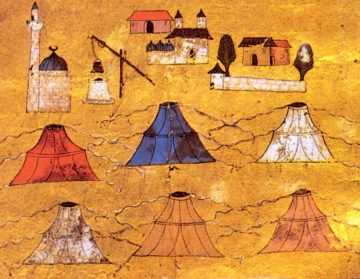Aleksandra Wagner at Cabinet Magazine:
 In the 1770s, the Paduan philosopher, natural historian, and Augustinian abbot Alberto Fortis (1741–1803) undertook several journeys to the other side of Adriatic, one of them to the lands of the Morlacchi. His travels were memorialized as Viaggio in Dalmazia, an epistolary travelogue printed in Venice in 1774 and translated into German two years later. It inspired Goethe to retranslate a folk poem collected by Fortis for his book and to recommend it for inclusion in Herder’s collection of Volkslieder. Goethe’s translation, initially published anonymously, made the “Xalostna pjesanca plemenite Asan-Aghinize” one of the most famous folkloric artifacts of the late eighteenth and nineteenth centuries in Europe.
In the 1770s, the Paduan philosopher, natural historian, and Augustinian abbot Alberto Fortis (1741–1803) undertook several journeys to the other side of Adriatic, one of them to the lands of the Morlacchi. His travels were memorialized as Viaggio in Dalmazia, an epistolary travelogue printed in Venice in 1774 and translated into German two years later. It inspired Goethe to retranslate a folk poem collected by Fortis for his book and to recommend it for inclusion in Herder’s collection of Volkslieder. Goethe’s translation, initially published anonymously, made the “Xalostna pjesanca plemenite Asan-Aghinize” one of the most famous folkloric artifacts of the late eighteenth and nineteenth centuries in Europe.
The sorrowful poem about Hasanaginica, the noble wife of Hasan Aga, opens with the literary gesture known as “Slavic antithesis.” This odd literary conceit refers to the following formula: a question is asked; an echoing suspense, in the negative, is offered first; and then we learn the answer.
more here.
